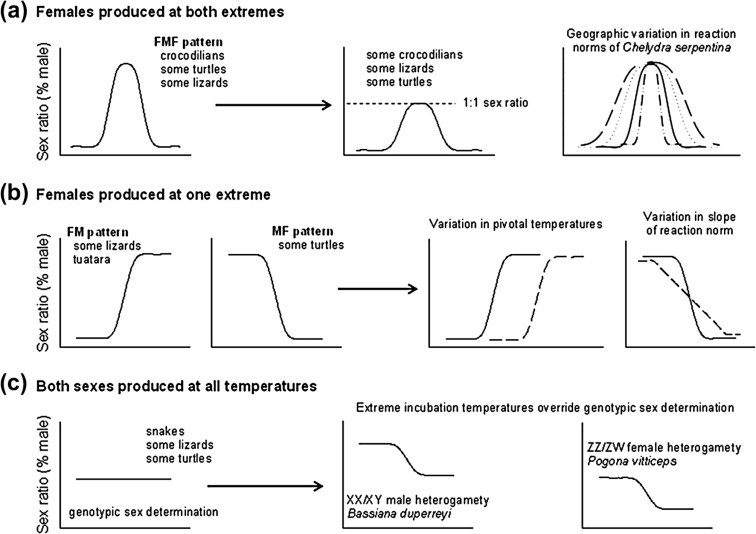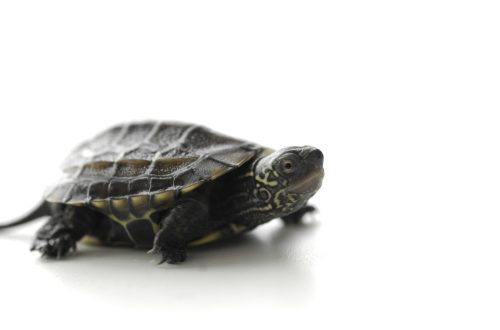
Sex determination in reptiles
Determining sex in snakes, lizards and other reptile species is difficult, not only for beginners, but also for specialists. It is often almost impossible to determine the sex of young individuals. Here we will consider some general principles for distinguishing males and females. But before determining the sex, it is necessary to study the information specifically for your reptile, as there are some nuances, and it is absolutely impossible to cover all species in the description.
Some reptiles can be sexed in appearance. For example, by color, size, tail, etc. So box and marsh, painted turtles have differences in color (head or iris). Males of many aquatic turtles (for example, red-eared) have long claws on their front paws to hold the female at the time of mating. Often in turtles, females grow larger than males. You can also tell a male turtle from a female by its tail. In males (due to the hemipenis located inside), the tail is longer, thicker, the opening of the cloaca is located closer to the tip of the tail, while in females the tail is short, the entrance to the cloaca is located at the base of the tail. In males, the lower shell (plastron) is often concave inward, while in females it is flat, but with apartment maintenance, rachitic deformity and impaired shell formation, this feature is often smoothed out.
Also, sexual dimorphism is expressed in many species of lizards. In almost all male lizards, the femoral pores are better developed, there are more of them and they are larger, and the base of the tail is thickened due to the hemipenis located there. In particular, male green iguanas develop large cheek pouches, large and prominent femoral pores, and a thicker tail at the base than females. In chameleons, crests and horns are usually pronounced and well developed in males, while in females they are barely marked or absent at all. Male Yemeni chameleons have spurs on their hind legs. Mature male skinks have a more massive body and a wide, large head. Many geckos, again, have a thickening-swelling behind the tail, which indicates their belonging to the male gender. As for snakes, it can be more difficult to determine the sex. In males, the tail is longer and thicker, the thickening just behind the cloaca is well defined. And in male boas, in addition, spurs are well marked.
Often reptiles exhibit sexual behavior. Males begin to behave aggressively during the rut, sometimes the hemipenis turns out of the genital pockets. Females of some species can even lay eggs without the presence of a male.
If it is impossible to determine the sex by external signs, many resort to sex test with a probe. To do this, you need to have a certain skill and knowledge of the features of this type. A thin blunt probe is disinfected, an antibacterial ointment is applied to it, then it is inserted into the cloaca, into the genital pocket. And according to the depth to which it is possible to insert the probe towards the tip of the tail, the specialist determines whether it is a hemipenis or a hemiclitor. If the probe is inserted deeply, then the male is in front of you. But again, in different species, the difference in the depth of introduction is different and this must be taken into account. During manipulation, the pet may tense up, which will make insertion difficult and possibly lead to incorrect conclusions about sex. Typically, probe detection is used in snakes and some lizards (eg monitor lizards and skinks).
Hemipenises can also be squeezed out of pockets when pressing on the base of the tail from below (in many lizards and snakes). At the same time, hemiclitors can be squeezed out in females, but they are smaller in size.
Almost all of the above signs require sufficient experience of the terrariumist. If he has nothing to compare with, and he saw only one individual, then it will be difficult to determine the sex both by the size of the tail and with the help of a probe, since all species have their own characteristics.
There are several other ways, but they are rarely used. This definition hormones in the blood test, radiography, ultrasound. On x-rays, you can see the bones of the hemipenis (in some monitor lizards and geckos). Ultrasound is often uninformative due to the small size of the testes and ovaries. The female can be recognized by ultrasound during the formation of follicles. Hormone analysis is informative in mature individuals, but there are five fluctuations in hormone levels depending on the mating season (during the rut, testosterone levels increase sharply).
In conclusion, it is worth recalling one interesting feature of the formation of sex in reptiles. In many species, sex is not laid genetically, but in the process of formation and depends on the external temperature of the environment. Moreover, this dependence is different for different species. In turtles, for example, males develop at low temperatures, and females in crocodiles and some eublefars; in some species of agamas, males hatch at medium temperatures, and if the temperature drops or rises, the birth rate of females increases. This interesting feature is still being studied.





